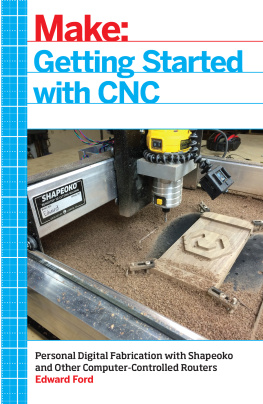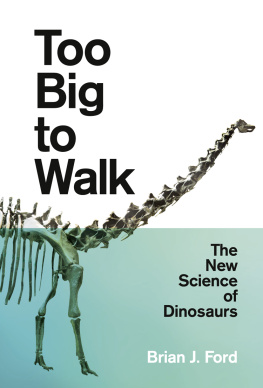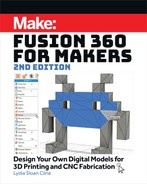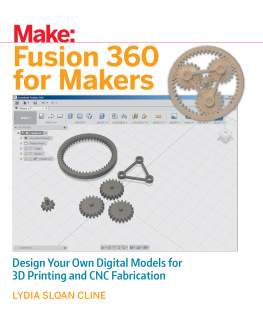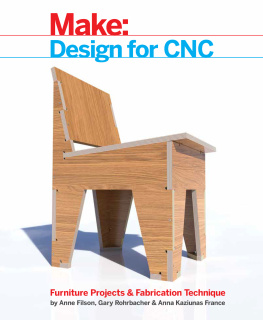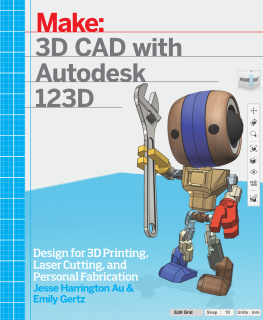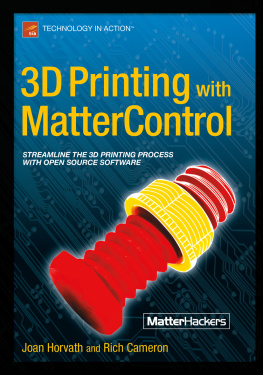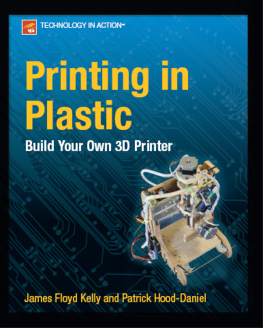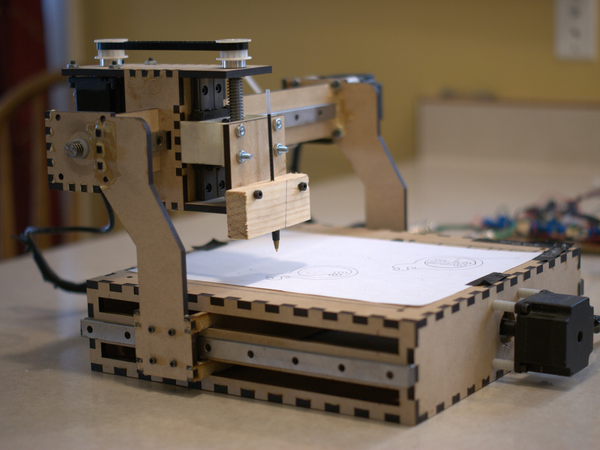Ford - Getting Started with CNC: Personal Digital Fabrication with Shapeoko and Other Computer-Controlled Routers
Here you can read online Ford - Getting Started with CNC: Personal Digital Fabrication with Shapeoko and Other Computer-Controlled Routers full text of the book (entire story) in english for free. Download pdf and epub, get meaning, cover and reviews about this ebook. year: 2016, publisher: Maker Media, Inc, genre: Children. Description of the work, (preface) as well as reviews are available. Best literature library LitArk.com created for fans of good reading and offers a wide selection of genres:
Romance novel
Science fiction
Adventure
Detective
Science
History
Home and family
Prose
Art
Politics
Computer
Non-fiction
Religion
Business
Children
Humor
Choose a favorite category and find really read worthwhile books. Enjoy immersion in the world of imagination, feel the emotions of the characters or learn something new for yourself, make an fascinating discovery.
Getting Started with CNC: Personal Digital Fabrication with Shapeoko and Other Computer-Controlled Routers: summary, description and annotation
We offer to read an annotation, description, summary or preface (depends on what the author of the book "Getting Started with CNC: Personal Digital Fabrication with Shapeoko and Other Computer-Controlled Routers" wrote himself). If you haven't found the necessary information about the book — write in the comments, we will try to find it.
Getting Started with CNC is the definitive introduction to working with affordable desktop and benchtop CNCs, written by the creator of the popular open hardware CNC, the Shapeoko. Accessible 3D printing introduced the masses to computer-controlled additive fabrication. But the flip side of that is subtractive fabrication: instead of adding material to create a shape like a 3D printer does, a CNC starts with a solid piece of material and takes away from it. Although inexpensive 3D printers can make great things with plastic, a CNC can carve highly durable pieces out of a block of aluminum, wood, and other materials. This book covers the fundamentals of designing for--and working with--affordable ($500-$3000) CNCs.
Ford: author's other books
Who wrote Getting Started with CNC: Personal Digital Fabrication with Shapeoko and Other Computer-Controlled Routers? Find out the surname, the name of the author of the book and a list of all author's works by series.

